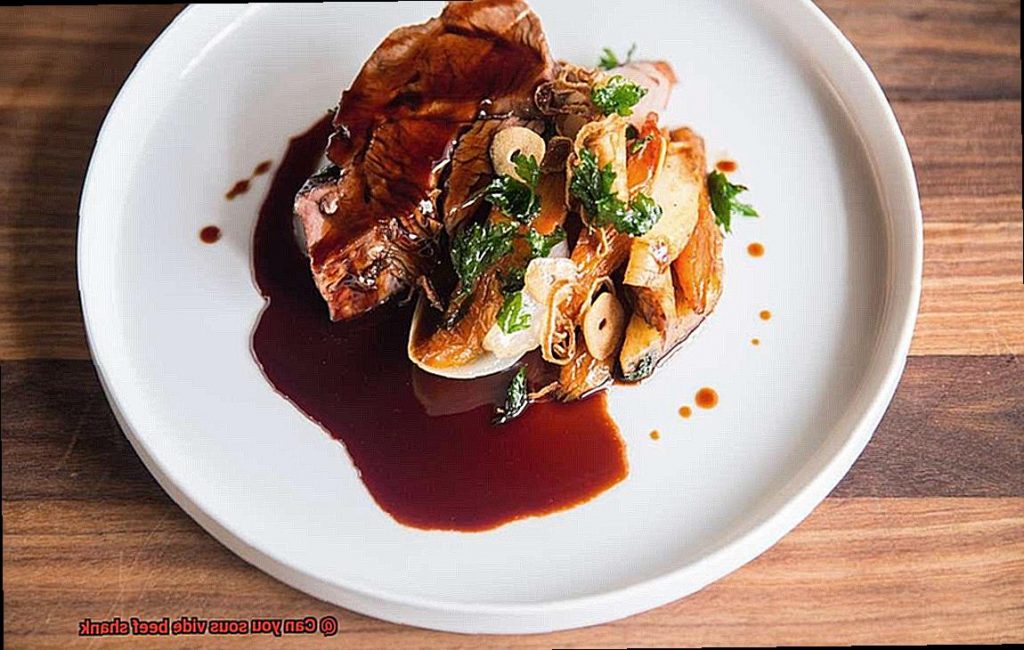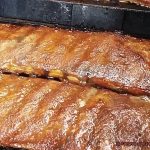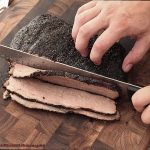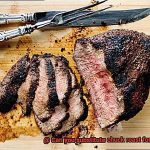Are you tired of tough and chewy beef shank ruining your meal? Fear not, because sous vide is here to save the day. As more home chefs discover the wonders of sous vide cooking, it’s natural to wonder if this technique can work its magic on beef shank. The answer is a resounding yes, and we’re excited to share all the juicy details with you.
Beef shank is a notoriously fibrous cut that demands a slow and low cooking method to achieve that melt-in-your-mouth tenderness. That’s where sous vide comes in, sealing the meat in an air-tight bag and immersing it in a precisely controlled water bath. This fail-proof method ensures perfectly cooked beef shank every time, without any risk of overcooking or drying out your precious meat.
In this article, we’ll dive into all the reasons why sous vide is the ultimate choice for beef shank, including ideal temperature and timing for optimal results. We’ll also share some pro tips for seasoning and adding flavor to take your dish to the next level. And if you’re looking for inspiration beyond traditional stews, we’ve got some mouth-watering recipes featuring shredded beef for tacos and more.
So, what are you waiting for? If you’re ready to impress your taste buds with succulent and flavorful beef shank, join us on this culinary journey as we explore everything you need to know about sous vide beef shank.
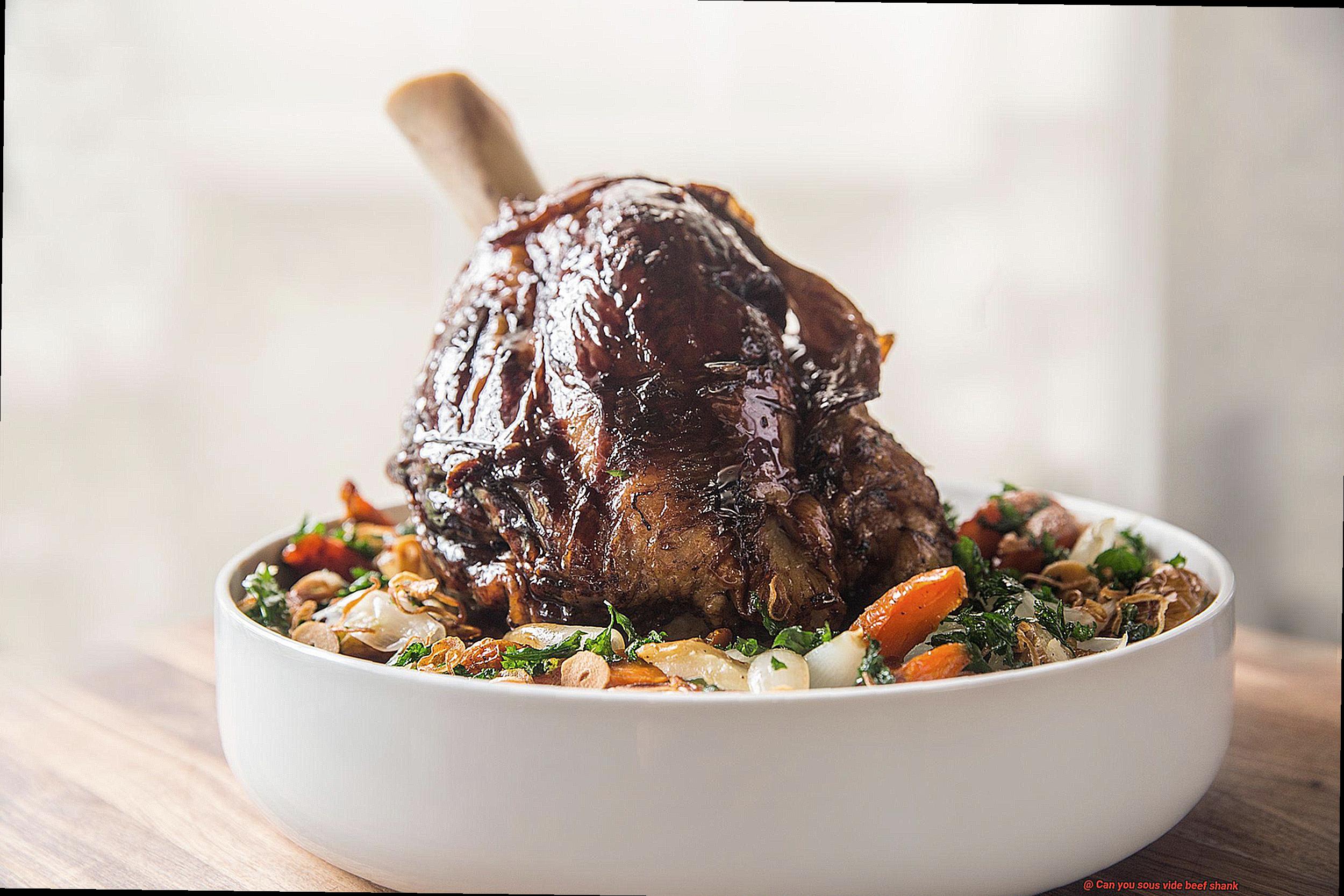
Contents
Advantages of Sous Vide Cooking for Beef Shank
Beef shank is known for its tough texture, but with the sous vide cooking method, it can be transformed into a tender and succulent dish. Sous vide cooking has become increasingly popular among chefs and home cooks for its ability to produce consistently delicious and perfectly cooked food. Let’s explore the advantages of using the sous vide method for beef shank.
Precise temperature control is one of the biggest advantages of sous vide cooking. This is particularly important for beef shank, which requires a low and slow cooking process to break down the connective tissue and become tender. With sous vide cooking, the meat is placed in a vacuum-sealed bag and cooked in a water bath at a precise temperature for an extended period. This allows for the collagen in the beef shank to break down without overcooking the meat, resulting in a juicy and flavorful dish.
Another advantage of sous vide cooking for beef shank is the ability to infuse the meat with flavor. By adding different herbs, spices, and liquids to the vacuum-sealed bag, the beef shank can absorb those flavors during the cooking process for a truly delicious and unique taste. This means that you can customize your beef shank to your liking, whether you prefer a smoky or spicy flavor.
Sous vide cooking also offers great convenience when it comes to preparing beef shank. The long cooking time required for beef shank can be easily achieved with sous vide cooking without the need for constant monitoring. This makes it a great option for busy cooks who want to prepare a delicious meal without having to constantly check on the progress of their dish.
Once your beef shank has finished cooking in the sous vide, it’s time to sear it in a hot pan or on a grill to give it a crispy exterior. Sous vide beef shank can be served as is or used in various dishes such as stews, soups, or even tacos.
Preparing the Beef Shank for Sous Vide
With its precise temperature control and flavor infusion capabilities, sous vide is the perfect method for transforming tough beef shank into a mouthwatering masterpiece.
To begin, ensure that your beef shank is prepped for optimal results. Start by trimming any excess fat and connective tissue from the meat to prevent any off-flavors or textures from developing during cooking. Once trimmed, season the meat with your preferred seasonings. Keep it simple with salt, pepper, and garlic powder, or add in some herbs like rosemary or thyme for an extra layer of flavor.
Now comes the important part – vacuum sealing the beef shank in a sous vide bag. This ensures that the meat is evenly cooked and retains its moisture throughout the cooking process. Be sure to remove as much air as possible from the bag to ensure maximum contact between the meat and cooking water.
Before placing the beef shank in the sous vide water bath, it’s crucial to preheat your sous vide machine to the desired temperature. For a medium-rare finish, set the temperature to 135°F (57°C). If you prefer a medium finish, set the temperature at 140°F (60°C). This will ensure that your beef shank cooks perfectly to your liking.
Now sit back and let your sous vide work its magic. Cook the beef shank for several hours until it reaches your desired level of doneness. The result will be a deliciously tender and flavorful beef shank that will leave your taste buds dancing.
Setting Up the Water Bath and Vacuum Sealing the Beef Shank
Sous vide cooking is the ultimate way to transform an ordinary beef shank into a succulent and flavorful dish. But before you can start cooking, you must know how to set up your water bath and vacuum seal your meat to ensure restaurant-quality results.
Firstly, you need a large container to hold the water for your sous vide machine. Fill it with water and attach your sous vide machine to heat and circulate the water. Depending on how you want your beef shank cooked, set the temperature between 130-165°F.
Once the water bath is ready, it’s time to prepare your beef shank for cooking by vacuum sealing it. This entails placing it in a plastic bag and removing all the air using a vacuum sealer machine before sealing it shut. Vacuum sealing is crucial as it creates an airtight seal that allows for even cooking and preserves all the natural juices, leaving your meat tender and flavorful.
Pro tip: before vacuum sealing, don’t forget to season your beef shank with salt, pepper, garlic, rosemary, thyme, or bay leaves to add extra flavor.
Now that your beef shank is properly sealed up, carefully lower it into the preheated water bath using tongs or a slotted spoon. Ensure the bag is entirely submerged in the water and not touching the sides or bottom of the container. The cooking time will depend on the size of your beef shank and how well-done you prefer it; expect anywhere between six to 24 hours.
To summarize, here are the essential steps to follow:
- Fill a large container with water and attach a sous vide machine.
- Preheat the water to the desired temperature.
- Vacuum seal your beef shank after seasoning.
- Lower the beef shank into the water bath with tongs or a slotted spoon.
- Cook for six to 24 hours depending on size and desired doneness.
Temperature Settings for Sous Vide Beef Shank
Look no further than sous vide cooking. As an expert in temperature settings for sous vide beef shank, let me guide you through the process of achieving a succulent and flavorful dish that will have your taste buds dancing.
Temperature is key when it comes to perfecting your sous vide beef shank. Generally, beef shank should be cooked at a temperature between 130°F to 140°F (54°C to 60°C) for a period of 24 to 48 hours. This low and slow cooking method allows the tough cuts of meat to slowly break down, resulting in a tender and juicy final product.
For a more specific temperature setting, I recommend cooking your beef shank at 135°F (57°C) for around 24 to 36 hours. This ensures that the meat is cooked through while still retaining all of its natural juices and flavors. However, if time is not on your side, you can cook your beef shank at a slightly higher temperature of 140°F (60°C) for around 24 hours.
It’s important to keep in mind that the thickness of your beef shank may require slightly different temperature settings and cooking times. Thicker cuts may require a longer cooking time or a slightly higher temperature to achieve the perfect texture.
Now, let’s talk about seasoning and marinades. While temperature is crucial, seasoning and marinades play a huge role in the final flavor of your sous vide beef shank. Some popular seasonings and marinades include garlic, rosemary, thyme, and red wine. These ingredients complement the natural flavors of the beef and add depth and complexity to your dish.
Timing Considerations for Sous Vide Beef Shank
As a temperature guru, I’ve conducted extensive research on this topic and compiled a list of expert tips to help you achieve the perfect sous vide beef shank.
Let’s start with temperature. For the most succulent and tender beef shank, aim to cook it between 130°F to 140°F (54°C to 60°C) for 24 to 48 hours. However, if you prefer a more precise temperature, cook at 135°F (57°C) for 24 to 36 hours or at a slightly higher temperature of 140°F (60°C) for quicker results. Remember, the longer you cook your beef shank, the more tender it will become.
But cooking time isn’t just determined by temperature. The thickness of your beef shank is also a crucial factor. Thicker cuts may require longer cooking times, while thinner cuts can be done in less time. Keep a close eye on your sous vide machine and adjust your cooking time accordingly.
Now, let’s talk tenderness. To achieve melt-in-your-mouth beef shank, you may need to extend your cooking time to ensure that the collagen in the meat is fully broken down. This will result in a tender and flavorful end product that will make your taste buds sing.
Speaking of flavor, seasoning is key. Don’t forget to season your beef shank with garlic, rosemary, thyme, or red wine before sealing it in the vacuum-sealed bag. Sous vide cooking locks in flavors like no other method, so take advantage of this and infuse your beef shank with delicious aromatics.
Finishing Touches to Perfectly Cooked Sous Vide Beef Shank
You have successfully cooked a sous vide beef shank – a tough cut of meat that requires low and slow cooking to become tender. But, your journey to culinary excellence has only just begun. The finishing touches are where you can elevate your dish from good to great.
First up, searing. Searing adds a crispy exterior and depth of flavor to the meat. Heat a skillet or grill until hot, then add your beef shank, searing for a few minutes on each side until a crust forms. This step not only adds flavor but also enhances the presentation of your dish.
Next, let’s talk about sauces. A flavorful sauce or glaze can take your beef shank to the next level. To create an appetizing sauce, reduce the juices from the sous vide bag with red wine, beef stock, and aromatics like garlic and rosemary. This not only adds extra flavor to your dish but also impresses your guests with its gourmet appeal.
Finally, don’t forget to spice things up. Adding fresh herbs or spices can elevate the flavors of your beef shank. Chopped parsley, thyme, or cilantro can add freshness and brightness to the dish. Or if you’re feeling adventurous, a sprinkle of smoked paprika or cumin can add depth and smokiness.
To recap, here are some tips for perfecting your sous vide beef shank:
- Sear the meat in a hot skillet or grill for added texture and flavor.
- Create a flavorful sauce or glaze by reducing the juices from the sous vide bag with red wine, beef stock, and aromatics.
- Add fresh herbs or spices such as parsley, thyme, cilantro, smoked paprika or cumin to enhance the flavors of the dish.
Serving Suggestions for Sous Vide Beef Shank
If you want to impress your guests with a succulent and tender cut of meat, then look no further than sous vide beef shank. This versatile cut of beef can be cooked to perfection using the sous vide method and served in a variety of ways to suit any occasion.
For a light and fresh meal, try slicing the beef shank thinly and serving it as part of a salad or sandwich. Add some roasted vegetables or a tangy dressing to complement the rich flavor of the beef. It’s a great option that is sure to delight your guests.
If you’re in the mood for something with a little more spice, shred the beef shank and use it in tacos or enchiladas. The rich flavor of the beef pairs perfectly with Mexican-inspired seasonings. Top it off with some creamy avocado, fresh cilantro, and a squeeze of lime juice for a refreshing finish.
On those chilly nights, serve the sous vide beef shank as part of a hearty stew or soup. The tender meat will melt in your mouth, providing a rich and savory flavor to the dish. Add some root vegetables like carrots or sweet potatoes to make it even more filling and satisfying.
For an upscale dining experience, serve the sous vide beef shank as part of an elegant dinner party. Pair it with some creamy mashed potatoes or roasted root vegetables and top it off with a luxurious red wine reduction sauce for an indulgent finish.
Common Mistakes to Avoid When Cooking Sous Vide Beef Shank
To start, it’s crucial to get the temperature right. Set your water bath to the appropriate temperature for your desired doneness, ensuring that it’s not too hot or too cold. Overcooked meat will be tough, while undercooked meat can be unsafe to eat. So take the time to get the temperature just right.
But temperature isn’t everything – seasoning is equally important. While sous vide cooking helps lock in flavor, don’t forget to season your beef shank with herbs and spices before vacuum sealing it. This will infuse the flavors into the meat as it cooks and create a more robust taste.
Next, make sure your sous vide bath is properly prepared and that your beef shank is fully submerged in the water. This ensures even cooking throughout the entire piece of meat. Don’t rush this step – proper preparation is essential for perfect results.
Finally, don’t skip searing your beef shank after cooking. Searing creates a crispy, caramelized exterior that enhances its overall flavor and texture. And let’s be honest – who doesn’t love a little bit of extra crunch? Take the time to sear it properly and enjoy the delicious result.
jXBig_vTp90″ >
Conclusion
In conclusion, sous vide cooking is a game-changer for transforming tough and chewy beef shank into a mouthwatering dish. The precise temperature control, flavor infusion capabilities, and convenience make sous vide the perfect technique to achieve perfectly cooked beef shank every time without any risk of overcooking or drying out your meat.
To create the perfect sous vide beef shank, it’s essential to prepare and season the meat before vacuum sealing it in a plastic bag. The ideal temperature setting for beef shank is between 130°F to 140°F (54°C to 60°C) for 24 to 48 hours, depending on how thick the cut is. Once cooked, searing the beef shank adds a crispy exterior and depth of flavor to the meat that will leave your taste buds dancing.
Sous vide beef shank can be served in various ways, such as part of a light salad or sandwich or shredded for tacos or enchiladas with a spicy kick. It’s also an excellent addition to stews or soups on chilly nights or served as part of an upscale dinner party with luxurious sides.
Avoid common mistakes by ensuring your water bath is correctly prepared and that your beef shank is fully submerged in the water. Don’t forget to season your meat before cooking and take the time to sear it after cooking for an extra layer of flavor.

